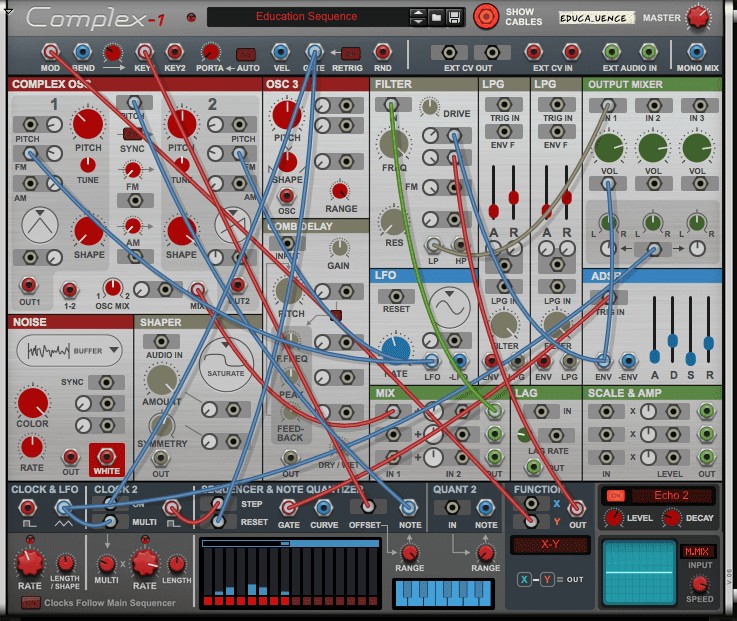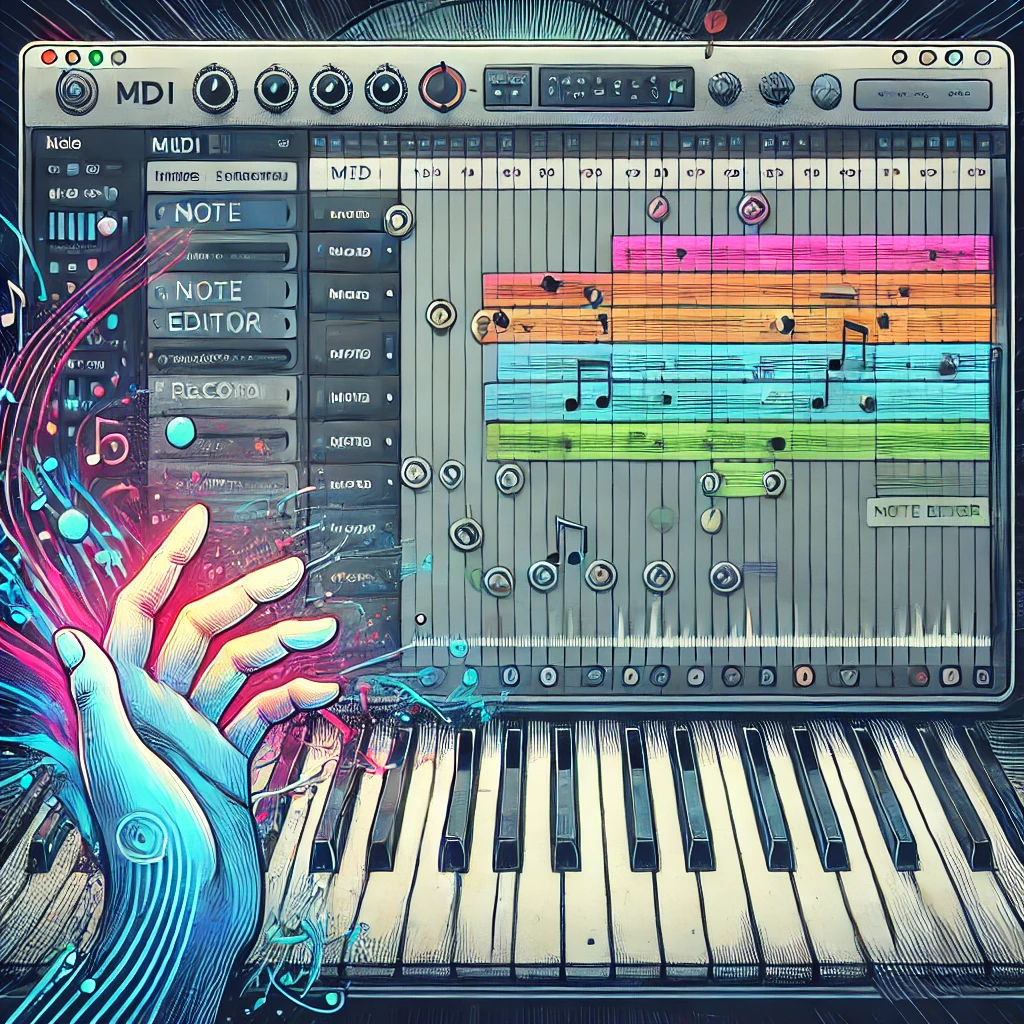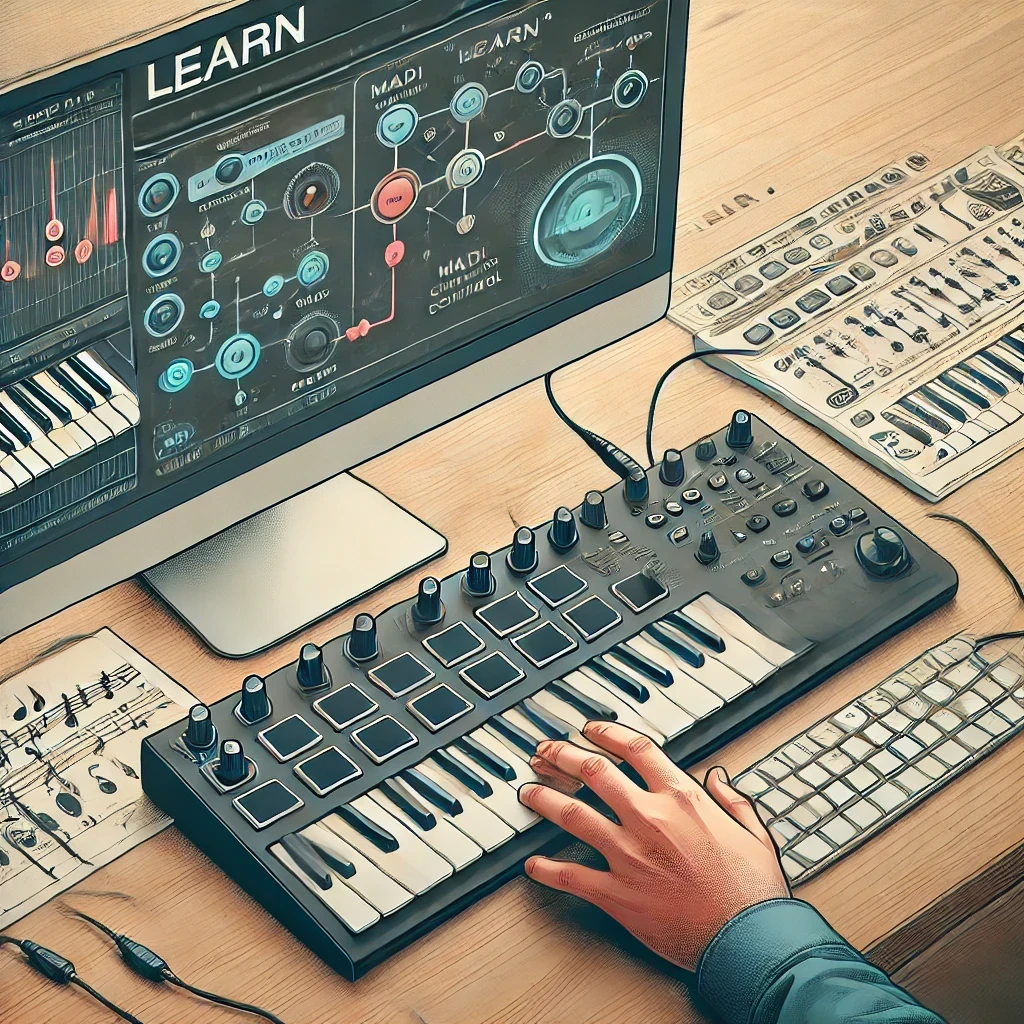
The difference between a MIDI module and a software synth lies in their physical form, functionality, and the way they integrate with other musical equipment and production environments. Both are used to generate sounds based on MIDI input, but they serve different roles in music production.
MIDI Module
What is a MIDI Module?
A MIDI module, also known as a sound module or tone generator, is a hardware device that generates sound in response to MIDI data. It doesn’t have a built-in keyboard, so it requires an external MIDI controller (such as a keyboard or computer) to trigger the sounds.
Key Features of MIDI Modules:
- Hardware-Based: MIDI modules are physical devices that often come with various sound libraries, ranging from pianos and strings to synthesized sounds.
- Standalone Operation: They can operate independently of a computer and are often used in live performances or studio setups where reliable, hardware-based sound generation is preferred.
- Preset Sounds: Most MIDI modules come with preloaded sound banks, often based on the General MIDI (GM) standard, as well as additional proprietary sounds.
- Connection: MIDI modules typically connect to other devices via MIDI cables, though many modern modules also support USB and other digital connections.
- Dependability: As hardware devices, MIDI modules are often prized for their reliability and low latency, making them suitable for live performances where stability is critical.
Examples of MIDI Modules:
- Roland JV-1080: A popular rack-mounted sound module with a wide range of sounds.
- Yamaha Motif Rack: A module version of the Yamaha Motif synthesizer series.
- Alesis NanoSynth: A compact module offering a variety of sounds.
Software Synth
What is a Software Synth?
A software synthesizer, or soft synth, is a virtual instrument that runs on a computer or mobile device. It generates sound digitally and is controlled via a MIDI controller or directly within a digital audio workstation (DAW).
Key Features of Software Synths:
- Software-Based: Soft synths are programs or plugins that operate within a DAW or as standalone applications.
- Flexibility and Customization: They often offer extensive sound design capabilities, allowing users to create, modify, and save custom sounds.
- Vast Libraries: Software synths can access massive libraries of sounds and samples, often far exceeding the capabilities of hardware MIDI modules.
- Integration with DAWs: Software synths integrate seamlessly with DAWs, allowing for easy automation, effects processing, and multi-track recording.
- Portability: Since they are software, soft synths can be installed on laptops or other portable devices, making them highly convenient for on-the-go music production.
- Cost-Effective: Often, soft synths are more affordable than hardware MIDI modules, especially considering the vast range of sounds and features they offer.
Examples of Software Synths:
- Serum by Xfer Records: A popular wavetable synthesizer known for its high-quality sound and visual interface.
- Native Instruments Massive: A software synth widely used for electronic music production.
- Spectrasonics Omnisphere: A comprehensive soft synth with an extensive library and powerful sound design tools.
Key Differences
- Physical Form:
- MIDI Module: A physical, standalone hardware device.
- Software Synth: A virtual instrument that runs on a computer or mobile device.
- Sound Libraries:
- MIDI Module: Typically comes with preset sound banks, often based on the GM standard and other proprietary sounds.
- Software Synth: Offers vast and often expandable libraries, with more flexibility in sound design and customization.
- Integration:
- MIDI Module: Connects to MIDI controllers or other instruments via physical MIDI connections.
- Software Synth: Integrates directly with DAWs and other software, often controlled via USB MIDI controllers.
- Latency and Reliability:
- MIDI Module: Known for low latency and high reliability, making them ideal for live performances.
- Software Synth: Dependent on the computer’s processing power; latency can vary, and reliability may be affected by system stability.
- Portability:
- MIDI Module: Portable but requires additional hardware (MIDI controller).
- Software Synth: Extremely portable, as it can be installed on laptops or mobile devices.
Why Choose One Over the Other?
- MIDI Module: Ideal if you need a reliable, low-latency solution for live performance or prefer hardware-based sound generation. They are also a good choice if you want to avoid relying on a computer for sound production.
- Software Synth: Best suited for those who require flexibility, customization, and seamless integration with a DAW. Soft synths are ideal for studio work, sound design, and situations where a vast array of sounds and effects is needed.
Conclusion
Both MIDI modules and software synths have their own strengths and are suitable for different applications. MIDI modules are reliable, hardware-based solutions favored in live settings, while software synths offer greater flexibility and integration in digital music production environments. The choice between the two depends on your specific needs, whether you prioritize portability, sound customization, reliability, or the breadth of available sounds.





 Why Use a MIDI Sequencer?
Why Use a MIDI Sequencer?

